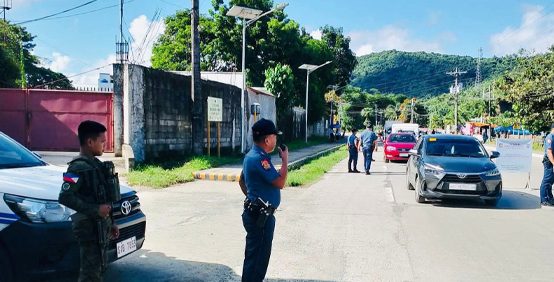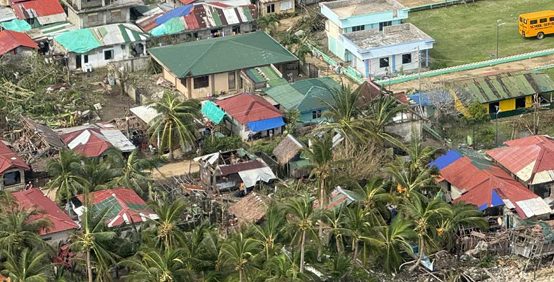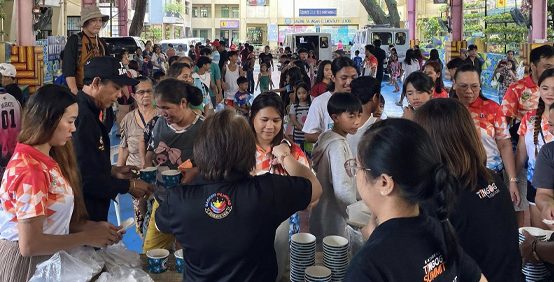TACLOBAN CITY — More than a decade after Super Typhoon Yolanda (Haiyan) unleashed its deadly storm surge, Tacloban City continues to wrestle with one of its most painful legacies — the struggle to provide safe, permanent housing for thousands of survivors who lost everything.
During the 12th year of Yolanda Commemoration last November 8, Mayor Alfred Romualdez said in an interview that the mission to build homes has evolved into a mission to restore dignity. While the city has risen from the rubble, the promise of secure, livable housing for displaced families remains only partially fulfilled.
“The intent was always good — to convince people to leave the danger zones,” Romualdez said. “But the execution failed us. Walang nangyayari.”
The Broken Promise of Rehabilitation
After the disaster, the National Housing Authority (NHA) spearheaded massive relocation projects intended to shelter thousands. Yet, according to Mayor Romualdez, the effort fell drastically short of expectations.
“The scale of the substandard work was shocking,” he said. “Forty percent of the units have problems. Many of these houses needed repair even before they were occupied — hindi pa nagamit, kailangan na ayusin.”
Some units were built on unstable ground; others lacked access to basic utilities like water and electricity. Over time, these failures deepened public frustration, giving Tacloban an unfair reputation as a place where “walang mga pabahay” — no real housing for survivors — despite the billions spent.
Turning Failure into Action
Determined to correct the mistakes of the past, Romualdez secured critical funding from President Ferdinand “Bongbong” Marcos Jr. to repair defective housing units and restore the public’s trust.
“This administration is focused on making things right,” Romualdez said. “There will be no ghost projects, no excuses. Every peso spent must translate to real homes for real families.”
The city has begun assessing hundreds of units, prioritizing those still unoccupied but structurally repairable. The plan, according to the mayor, is to ensure that every existing shelter becomes habitable — a step toward fulfilling a promise long overdue.
Facing the Modern Challenge
But housing, Romualdez warns, is only one part of the crisis. Tacloban continues to face mounting pressure from overpopulation and illegal resettlement in high-risk coastal areas — a dangerous trend that could turn future disasters into repeat tragedies.
“We are like a ship that’s starting to sink — lulubog na tayo sa daming tao,” the mayor said. “We need to control the influx of settlers and stop people from returning to danger zones.”
He also called on the Department of the Interior and Local Government (DILG) to take stronger measures, even suggesting criminal accountability for local officials who allow settlements in danger zones for political gain.
Learning from the Past
For Romualdez, the city’s recovery is about more than rebuilding—it’s about remembering. The lessons of Yolanda, he says, must remain at the heart of every decision Tacloban makes moving forward.
“We owe it to those we lost,” he said. “We can’t let the same mistakes happen again. Every safe home built today is a promise that we’ve learned — and that we will protect our people better.”
As Tacloban pushes ahead with its housing rehabilitation program, the story of Yolanda survivors continues to evolve — from one of loss and neglect to one of persistence, accountability, and hope.
Photo: Taclobanons light candles in memory of loved ones lost to Typhoon Yolanda. (Tacloban City Information Office)



 Tacloban Gears Up for Christmas Rush with New Traffic Routes
Tacloban Gears Up for Christmas Rush with New Traffic Routes  Hope Amid Ruins: Communities of Homonhon Rise After Typhoon Tino’s Wrath
Hope Amid Ruins: Communities of Homonhon Rise After Typhoon Tino’s Wrath  Romualdez, Tingog Partylist Continue Relief Efforts for Areas Hit by Successive Typhoons ‘Tino,’ ‘Uwan’
Romualdez, Tingog Partylist Continue Relief Efforts for Areas Hit by Successive Typhoons ‘Tino,’ ‘Uwan’  Two Storms in Samar: Soldiers Face Rebels and Typhoon Tino in a Night of Courage and Chaos
Two Storms in Samar: Soldiers Face Rebels and Typhoon Tino in a Night of Courage and Chaos  Tacloban Jail Levels Up Inmate Care
Tacloban Jail Levels Up Inmate Care  Tacloban Police Arrest First-Time Offender, Seize P34K Worth of Suspected Shabu
Tacloban Police Arrest First-Time Offender, Seize P34K Worth of Suspected Shabu